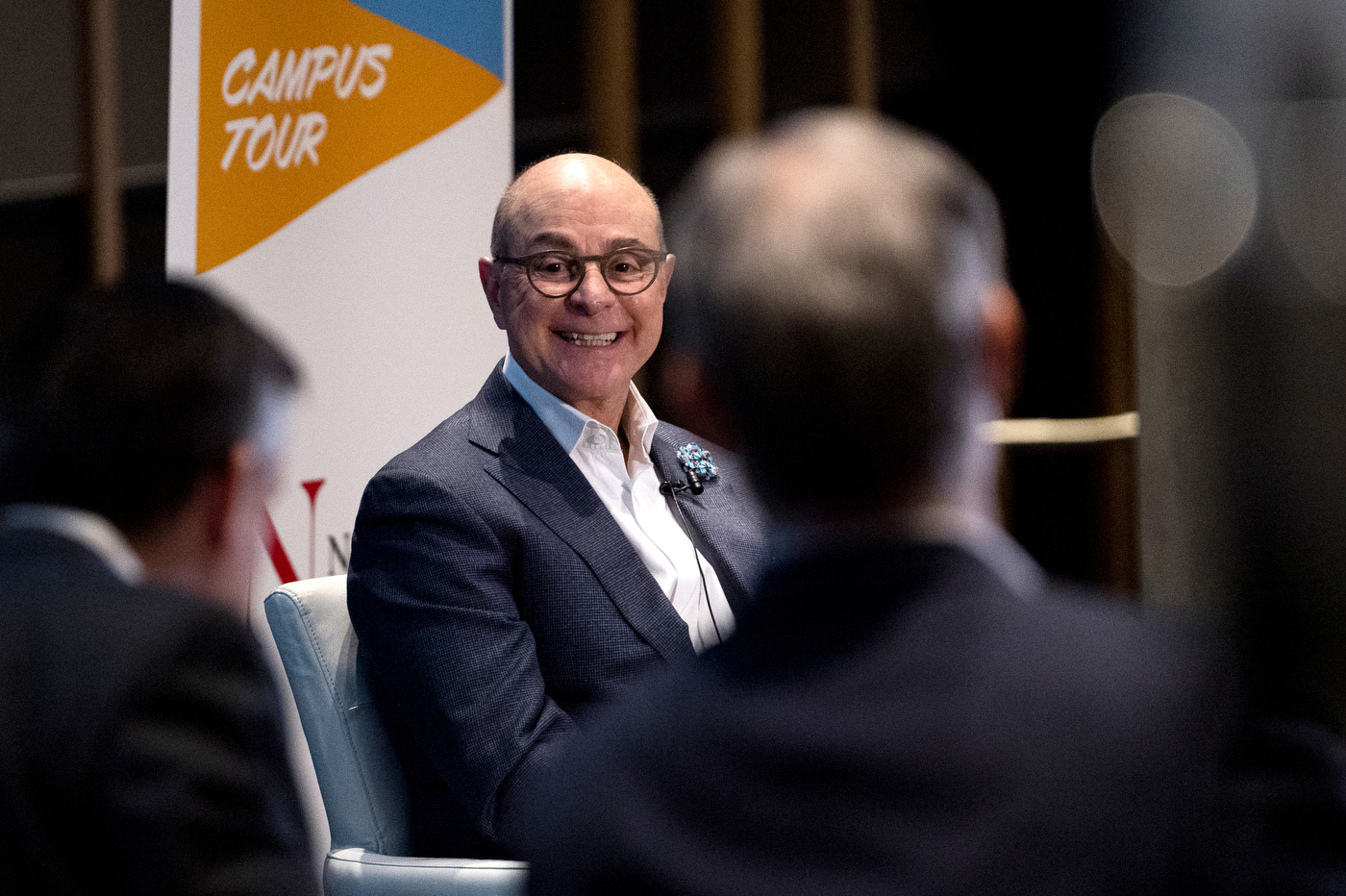
By Eva Botkin-Kowacki
News at Northeastern
When the COVID-19 pandemic began, some pundits predicted that it might mark the entrance into a new phase of higher education: a virtual one. It would be the end of the residential college model, they said.
Indeed, universities quickly pivoted to online classes in the spring of 2020. It was a grand experiment in a new mode of teaching and learning, one heavily reliant on technology. But, as Northeastern University President Joseph E. Aoun said during a recording of the popular higher education podcast Future U. on Monday, the results emphasized the enduring importance of human interaction.
In the wake of this crisis, Aoun told podcast hosts Jeff Selingo and Michael Horn as they made Northeastern their first stop on a national tour of college campuses, it’s time to reinvent higher education. But that doesn’t mean eschewing in-person campus life.
“COVID-19 highlighted the importance of the human factor,” Aoun stressed. Student feedback and gatherings organized by students to stay connected showed that “people need to be part of a community. You are learning not only from your professor, but you are learning from each other.”

During the podcast recording, which Northeastern hosted in its Interdisciplinary Science and Engineering Complex, Aoun and other Northeastern leaders explained how the pandemic pivot to online and then hybrid learning revealed that students craved in-person learning and collaboration. But, they discovered, it wasn’t a binary choice between in-person and online learning.
“We had to learn very quickly what students can learn from us in person, and what students can learn on their own,” using the technology, said Marilyn Minus, professor and chair of the Department of Mechanical and Industrial Engineering at Northeastern. Now, she said, “We understand the students better and the different contexts.”
With those insights and the basic technical know-how to teach using virtual tools amassed over the past two years, Minus said, professors can now start to think about how to further leverage technology to reinvent teaching. “We’re ready to receive that,” she said. “We’re out of the pivoting mode, get-it-done mode, and now we’re into a redesign, rethink-our-curriculum [mode].”
The meaning of the term “online learning” has also dramatically changed during the pandemic, said David Madigan, provost and senior vice president for academic affairs at Northeastern. It once meant that students were receiving a lesson in different places at different times, typically through a recorded lecture. That was set in opposition to the synchronous experience of learning fully in person, with all students in the same room as the teacher.
“Education — higher education and perhaps all forms of education — going forward, will embrace both of these. But there’s so much space in the middle,” Madigan said. For example, a hybrid model with some students in the classroom, some online, learning collaboratively at the same time. “Higher education going forward is going to weave together different modalities,” the provost said.
The hybrid and online learning options have afforded students a newfound versatility, according to fourth-year criminal justice and political science major Breanna McClarey. “I have taken hybrid classes, fully in person, and fully online classes during the pandemic, so I’ve kind of gotten the entire scope,” she said. “I really liked the flexibility that the university offered when we were able to select the exact classes that we were going to go to in person for the next week. And that could change week by week.”
Broadly, Aoun said, the disruption of the pandemic is “an opportunity for universities and colleges to reflect on who they are” and what they offer.
“In order to maintain contact with the students, you have to go where the learners are,” Aoun said. That’s why Northeastern has been focused on expanding its global university system beyond the flagship Boston campus to campuses in Maine, California, London, Vancouver, and many more places.
“There is a difference between a university and a campus,” Aoun said. Northeastern is not synonymous with Boston, and positioning campuses in a variety of locations around the world helps reorient the university to focus outwardly on the problems that the university’s educational and research programs address.



















